Having the right PSI in your bike tires can make a world of difference. However, it would be an oversimplification to say that less air offers a more comfortable ride and more air makes you go faster. While this is true in many instances, the fact of the matter is that proper inflation for optimal performance depends on the individual rider and his or her bike.
Every tire has a recommended psi printed on its side close to where it touches the rim. This is usually written as a range (for instance, "90 to 115 psi") since there are reasons why you'd want to be on the higher or lower end, which we'll get into shortly.
Basic rule of thumb if your tires happen to not indicate a recommended pressure: pump them up until they're firm but still slightly squeezable. Alternatively, there are generally-accepted ranges based on bike type:
| Bike tire type | PSI range |
| Kids' bike tires | 20–40 PSI |
| Narrow tires / road bikes | 80–130 PSI |
| Medium tires / hybrid bikes | 50–70 PSI |
| Thick tires / mountain bikes | 30 PSI (off-road) 50 PSI (on-road) |
Road bikes and tires are built for speed over smooth surfaces. Higher air pressure lets them roll easier and faster. A typical range for these would be between 80 and 130 psi, although racers can sometimes go as high as 160 psi. Quick tip if you're caught inflating a road tire without a gauge and need to ballpark it: at 100 psi, a tire can barely be compressed with your thumb.
Unlike roadies, mountain bikes are flying over loose, bumpy terrain. Tires with too much air lead to too much bounce, making for a jolty ride. Lower pressure helps with shock absorption while also giving you more traction since more of the tire comes into contact with the ground. MTB manufacturers recommend between 30 and 50 psi on most of their bikes since this is a nice balance between on-road (closer to 50) and off-road (closer to 30) riding.
Hybrid bike tires require pressure levels between those of road and mountain bikes. This is usually in the 50 to 70 psi range. Kids' bikes have the lowest recommended inflation, typically 20 to 40 psi. Keep in mind that these are called "recommendations" for a reason, though. A number of factors go into the inflation process beyond just your style of bike.
Keep in mind that these are called "recommendations" for a reason, though. A number of factors go into the inflation process beyond just your style of bike.
Which leads us to…
Because nothing in life is ever as simple as it should be, we've included a few more things to ponder when it comes to making sure everyone's tires are in good shape for their next ride.
As a general guideline, more weight = more pressure. Whether you're competing in the Tour de Whatever or shredding up the backcountry, heavier riders should use a higher psi than lighter ones to see the same performance in their tires. For perspective, someone weighing in at 200lbs will probably want to pump in around 20 more psi than someone who's 160. There's no real slide rule for this, so just play around with the pressure and see what feels best for you. Also keep in mind that rear tires tend to carry more weight than those in front, so adjust accordingly as necessary.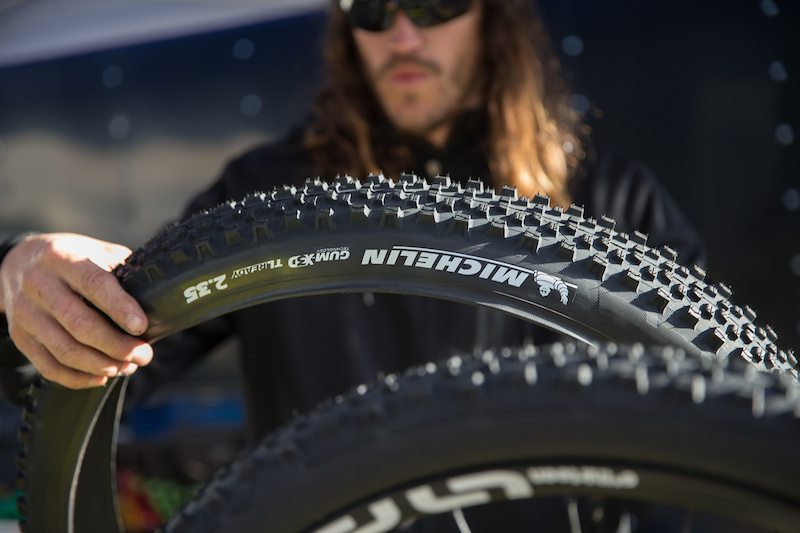
We know through physics that temperature affects air pressure. So, all else being equal, people biking in Miami in August are going to have higher pressure in their tires than people biking in Boston in January. In addition to weather, sustained deceleration using rim brakes generates friction that can increase temperatures inside the tube significantly. Fortunately, they also cool off relatively quickly, but it's something to keep an eye on during long descents. It may also be worth mentioning to your burgeoning roadster as he or she is learning the basics of hand braking.
In short, don't do either. If you overinflate, you run the risk of blowing the tube either while pumping or while riding due to sudden or constant impact. If underinflated, the low pressure could cause pinch flats. This occurs when the tube becomes squeezed between the rim and tire casing by hitting a bump with an underinflated wheel. Not only does this damage the tire, it can also hurt the rim. Plus, flat tires slow you down and make you pedal harder, which is just no fun.
Not only does this damage the tire, it can also hurt the rim. Plus, flat tires slow you down and make you pedal harder, which is just no fun.
"How often should I inflate my tires?" is a common question among many casual bikers. The answer depends on how often and how hard you ride. Some people break out the pump every few days, others once a week, and still others even less regularly than that. Even if you or your kids have left your wheels in the garage for months, air tends to seep out slowly, anyway. Therefore, as a bike-safety best practice, just like a car it's certainly never a bad idea to check your tires before each ride. Especially if it's been a while.
The pro's choice, floor pumps do a great job. They are easier to pump and attach, and will pump your tires up much quicker than a hand pump will. Some come with gauges, which eliminate 1) the need to switch back and forth between a pump and standalone gauge, or 2) if you're really lazy, outright guesswork.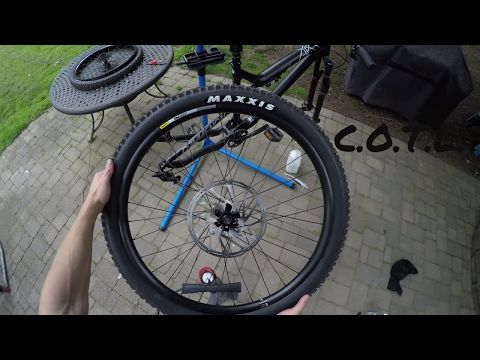
However, some expert cyclists are cautious of floor pumps with gauges, as the accuracy of the gauge can svary and may be off by as much as 10 PSI. On the plus side, if the gauge is consistent you can calculate the difference and adjust your target PSI to compensate.
It may be tempting to simply use the air compressor at your neighborhood Exxon, but these are less than accurate and can often overinflate your tires (it's a gas station, they're meant for cars). For serious riders whose circuits take them far from home, a small hand pump can help you change a flat on the fly. Carbon dioxide inflators accomplish the same thing if you're an air-in-the-can kind of guy.
Essential for any enthusiastic cyclist, hand pumps are harder work to fill the tire with, and aren't as quick. But they're transportable, so you always have your pump with you. It's simply foolish to embark on any long distance bike ride without your trusty hand pump and puncture repair kit.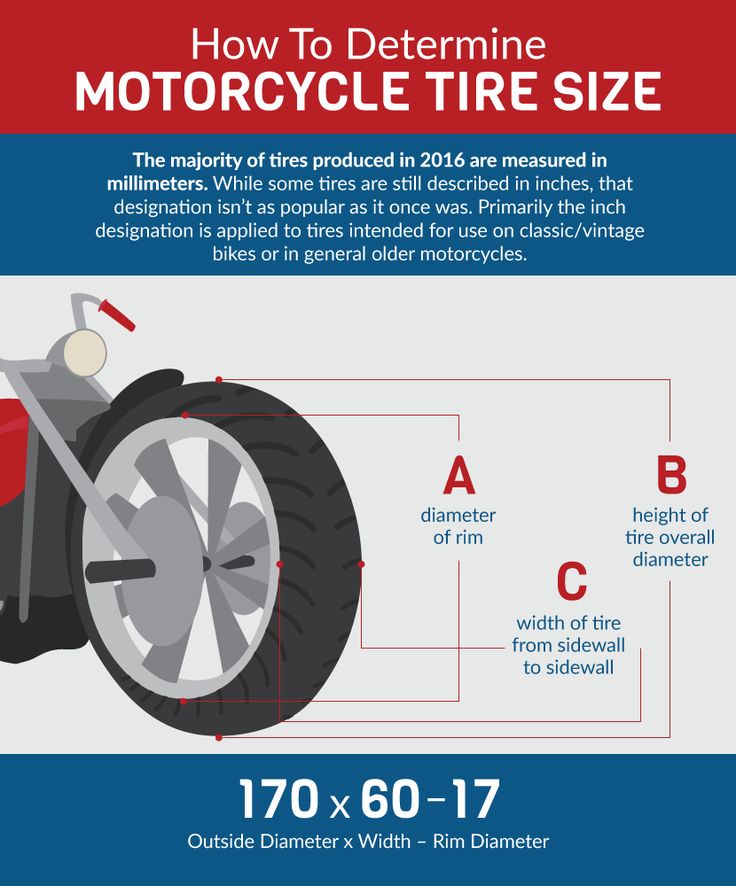
So there you go, we hope this quick guide to bike PSI pressure was useful. To recap: figure out what feels most comfortable based on your particular cycling style. Go with that. Keep an eye on your pressure, and check it before every ride. You'll get a feel for it over time. Like, literally.
Whether you’re road biking, hitting single-track trails on a mountain bike, or going for a casual stroll on a hybrid or cruiser, tire pressure is one of the most important aspects to pay attention to, regardless of when or where you’re riding.
Your tires are the only thing between you and the ground, so it's always best to be sure that they are inflated properly for your current riding situation and preferences.
If you ride on even a somewhat frequent basis, you need to be checking your tire pressure on a consistent basis. This almost always includes the use of an actual tire pressure gauge so you can be precise with things.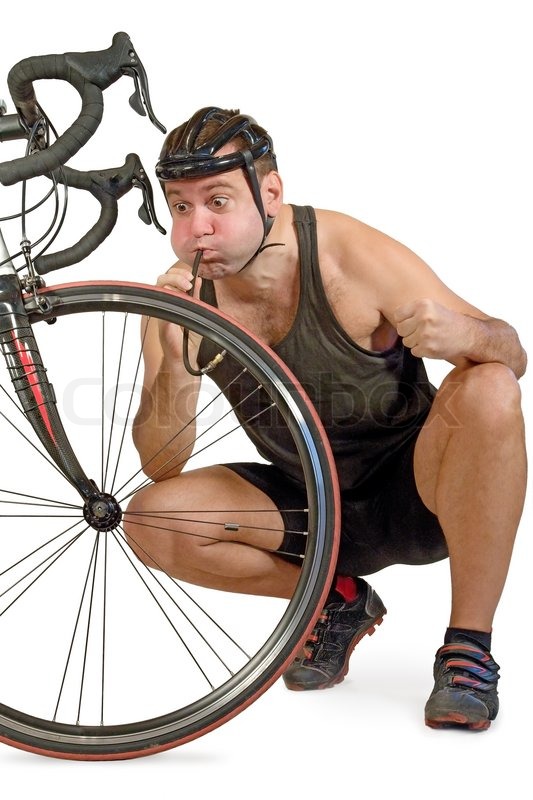
However, it’s safe to say that you may not always have a tire pressure gauge on you during certain riding situations, so you need to be able to at least provide an estimate without using any kind of tools.
Below, we’ll go over how to check your tire pressure, both with and without a tire pressure gauge.
Regardless of what type of bike you’re riding, the tires will always have a specific range on the side of them for you to reference. First, find this range before using a gauge or inflating.
Once you know the psi range, use your tire gauge by placing it on the valve and pressing down, causing the needle on the gauge to move and display the pressure. Alternate between the air pump and gauge until you reach the desired pressure.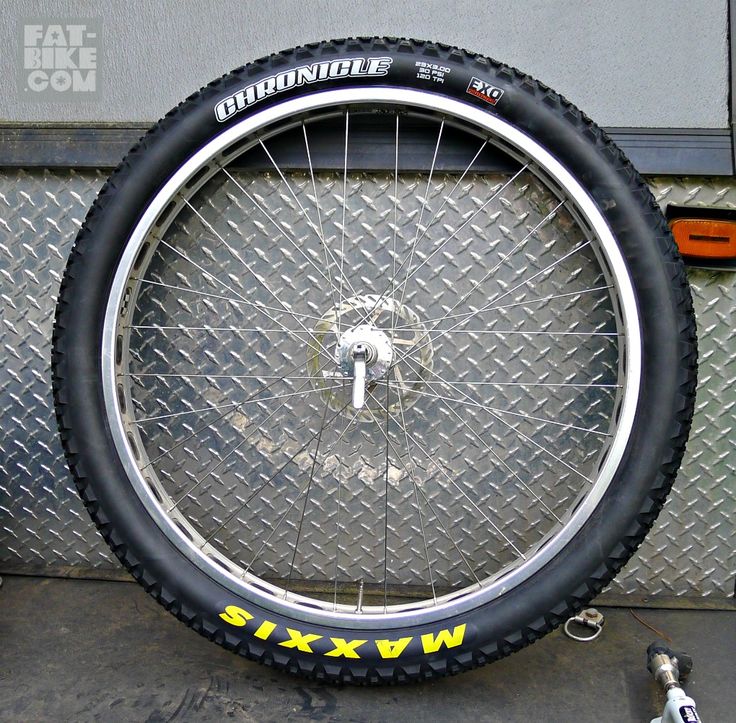
To make things easier, get a pump with a built-in gauge.
While you may not be able to get a precise readout of tire pressure without a gauge, there are still some ways you can improvise.
If you are on a road bike, you can simply squeeze the tire on each side. If there is a lot of giving, inflate until you can barely squeeze it.
For a mountain bike, get on the bike and look down. If you see the tires protruding out on each side more than a millimetre or two, you’ll need to add air. If they feel rock hard and offer no give, you need to relieve some of the air out.
Different types of bike tires require different pressures. As a general rule of thumb, road tires usually need 80 to 130 psi, mountain bike tires require about 25 to 35 psi, and hybrid tires, 50 to 70 psi.
Weather can play a factor in your tire pressure as well. For instance, each 10-degree-Fahrenheit drop in outside temperature correlates to a 2 percent drop in tire pressure. An example of this would be the outside temperature dropping from 90 degrees to 60 degrees, which means your road tire pressure would drop from 100 psi to 94 psi.
Also, the surface you’re riding on plays a factor too. If you’re on a road bike, and you are riding on a very smooth road, you can keep the psi up to a maximum level. Rougher roads will require a slight drop in pressure to offer a smoother ride.
If you’re on a mountain bike and you are going to be tackling some adventurous single-track that has uneven surfaces and plenty of sand and dirt, dropping your psi a bit can give the bike better traction and grip.
Bodyweight is another factor. Let’s say that a 165-pound rider uses 100 psi on his road bike.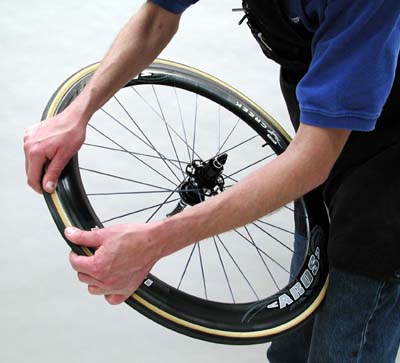 With that point of reference, a 200-pound rider inflates to around 120 psi, while a 130-pound rider could probably ride as low as 80 psi.
With that point of reference, a 200-pound rider inflates to around 120 psi, while a 130-pound rider could probably ride as low as 80 psi.
In any situation, never go above or below the manufacturer's recommended tire pressures.
Road bikes and tires are designed to go fast on flat ground. Higher air pressure allows them to roll more easily and quickly. These typically have a pressure range of 80 to 130 psi, while racers might go as high as 160 psi. If you're stuck inflating a road tire without a gauge and need to guess, a tire can barely be compressed with your thumb at 100 psi.
Mountain bikes, unlike road bikes, fly over rough, uneven terrain. Too much air in the tires causes too much bounce, resulting in a jarring ride.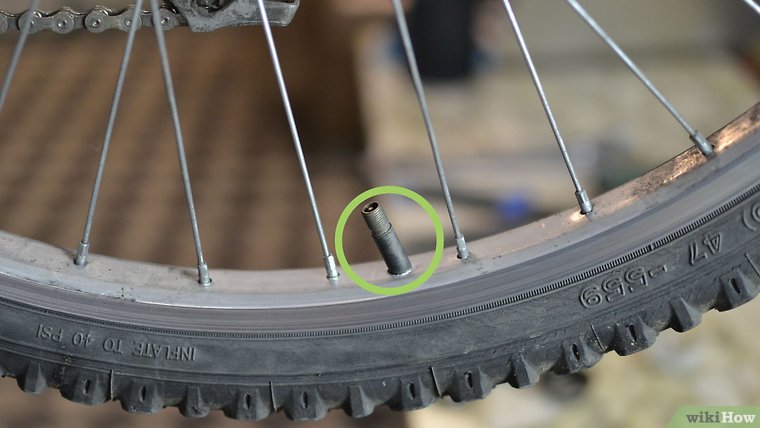 Lower tire pressure improves shock absorption while also increasing traction by allowing more of the tire to make contact with the ground. Most MTB manufacturers recommend a tire pressure of 30 to 50 psi because it is a good compromise between on-road (closer to 50) and off-road (near to 30) riding.
Lower tire pressure improves shock absorption while also increasing traction by allowing more of the tire to make contact with the ground. Most MTB manufacturers recommend a tire pressure of 30 to 50 psi because it is a good compromise between on-road (closer to 50) and off-road (near to 30) riding.
Hybrid bicycle tires must be inflated to a pressure that is halfway between that of a road bike and that of a mountain bike. This is normally between 50 and 70 psi. The lowest suggested inflation for children's bikes is 20 to 40 psi. But keep in mind that these are referred to as "recommendations" for a reason. Beyond your bike's style, a number of elements play a role in the inflation process.
Temperature impacts air pressure, as we know from physics. Aside from the weather, persistent deceleration with rim brakes causes friction, which can considerably raise temperatures inside the tube. Fortunately, they cool off rapidly as well, but it's something to be aware of on long descents. It's also something to say to your budding roadster when he or she learns the fundamentals of hand braking.
Fortunately, they cool off rapidly as well, but it's something to be aware of on long descents. It's also something to say to your budding roadster when he or she learns the fundamentals of hand braking.
As a rule of thumb, more weight equals more pressure. To see the same performance in their tires, heavier riders should utilize a greater psi than lighter riders, whether they're competing in the Tour de Whatever or tearing up the backwoods. To put things in context, someone who weighs 200 pounds will probably want to pump in roughly 20 psi more than someone who weighs 160 pounds. There isn't a certain sliding rule for this, so experiment with the pressure to determine what works best for you. Keep in mind that rear tires tend to carry more weight than front tires, so make any required adjustments.
A popular question among casual bikers is "How often should I inflate my tires?" The answer is contingent on how frequently and how hard your bike is. Some people use the pump every few days, while others use it once a week, and yet others use it even less frequently. Even if you or your kids have been leaving your wheels in the garage for months, air will eventually seep out. As a result, just like a car, it's always a good idea to inspect your tires before each trip as a bike safety best practice. It's especially important if it's been a while.
Some people use the pump every few days, while others use it once a week, and yet others use it even less frequently. Even if you or your kids have been leaving your wheels in the garage for months, air will eventually seep out. As a result, just like a car, it's always a good idea to inspect your tires before each trip as a bike safety best practice. It's especially important if it's been a while.
In a nutshell, don't do both. You run the risk of blowing the tube if you overinflate it, either during pumping or while riding, due to sudden or constant contact. Pinch flats can occur if the tire is underinflated. When you hit a bump with an underinflated wheel, the tube gets compressed between the rim and the tire casing. This not only harms the tire, but it can also harm the rim. Flat tires also slow you down and force you to pedal harder, which is not fun.
There are two types of bike pumps
Hand pumps are necessary for each avid cyclist, but they are more difficult to use and take longer to fill the tire.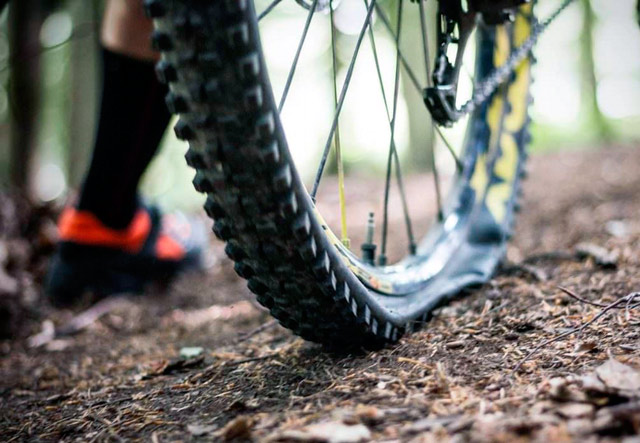 However, because they're portable, you'll always have your pump with you. Any long-distance bike trip would be silly if you didn't have your trusty hand pump and puncture repair kit.
However, because they're portable, you'll always have your pump with you. Any long-distance bike trip would be silly if you didn't have your trusty hand pump and puncture repair kit.
Floor pumps are the professional's pick since they work so well. They're easier to use and connect, and they'll fill your tires up considerably faster than a manual pump. Some come with gauges, which eliminate
1) The need to switch between a pump and a standalone gauge, or
2) Sheer guesswork if you're really lazy.
Expert bikers, on the other hand, are wary of floor pumps with gauges because the gauge's accuracy varies and can be off by as much as 10 PSI. On the bright side, if the gauge is constant, you can compute the difference and compensate by adjusting your goal PSI.
It’s worth saying again: Tire pressure is crucial. While we strongly recommend that you purchase a tire gauge, learning how to estimate tire pressure by look and feel can come in handy for the times you may be without. Either way, always be vigilant with your tire pressure.
While we strongly recommend that you purchase a tire gauge, learning how to estimate tire pressure by look and feel can come in handy for the times you may be without. Either way, always be vigilant with your tire pressure.
Bicycles.StackExchange
LiveStrong
When buying a bicycle for themselves, many do not even think about the fact that the convenience and comfort when riding it is achieved by properly selected tire pressure. The service life of the bicycle, the speed of riding, the degree of tire wear, safety, control of the two-wheeled friend depends on how the wheels are inflated.
Many cyclists believe that inflating the tires is only necessary for a good bike ride. However, flat tires have a wider area of contact with the road, which means that grip will be better, but it will be very difficult to accelerate to a speed of 30-35 km / h on such tires.
When inflating your tires, you should always consider the type of terrain or surface you will be driving on. If the walk is supposed to be on an asphalt road, the tire pressure of the bicycle should be close to the maximum allowable value. Elastic wheels on a flat surface will provide a smooth rolling and high speed of movement.
For cross-country riding with unpaved paths, it is better to set the tire pressure to medium tolerable, so that you can ride long distances in comfort and convenience. At high pressure, the grip of the wheel with the road will be minimal, respectively, all holes, pebbles, and bumps on the road will be sensitive. And with flat tires, the likelihood of damage to the wheel or puncture of the chamber increases.
And with flat tires, the likelihood of damage to the wheel or puncture of the chamber increases.
In order to protect yourself on the road, as well as to keep the bike or its individual parts intact, you need to know exactly the lower and upper limits of permissible values, to what pressure the bicycle wheels can be pumped.
Information about tire pressure gives you an advantage when cycling:
Forget the old "grandfather" way to check the wheel with finger pressure.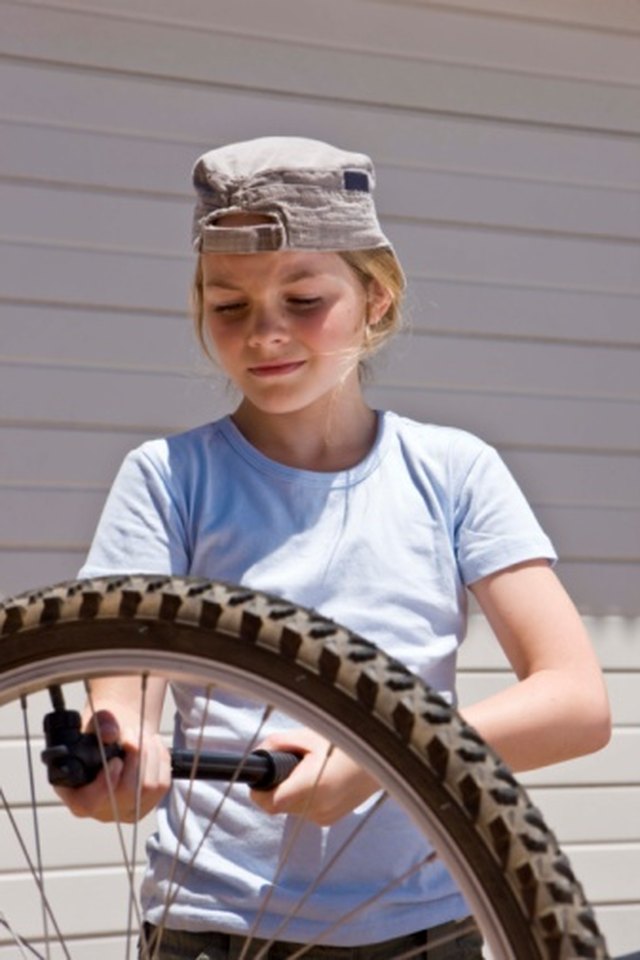 No need to rely on tactile sensations, trying to feel with your hand the degree of rubber penetration on the tire. The air leaves the wheel gradually, through the pores in the rubber. Within 2-3 weeks, the pressure decreases by 0.1-0.2 atmospheres, but you cannot determine this with your fingers. The exact value at any time will help determine the pressure gauge that every cyclist should have in his arsenal. With its help, it is simple, with a minimum error, the level of pressure in bicycle tires is measured. A pump with a pressure gauge (floor or manual) will become an indispensable tool for cyclists.
No need to rely on tactile sensations, trying to feel with your hand the degree of rubber penetration on the tire. The air leaves the wheel gradually, through the pores in the rubber. Within 2-3 weeks, the pressure decreases by 0.1-0.2 atmospheres, but you cannot determine this with your fingers. The exact value at any time will help determine the pressure gauge that every cyclist should have in his arsenal. With its help, it is simple, with a minimum error, the level of pressure in bicycle tires is measured. A pump with a pressure gauge (floor or manual) will become an indispensable tool for cyclists.
There are three standard values in which bicycle tire pressure is measured.
kPa = 14.504 PSI
All these units are used to some extent - in different countries, by different manufacturers. For residents of Russia and the post-Soviet space, the change in bars is more familiar, since this unit is clearly associated with the pressure of the 1st Earth's atmosphere at ocean level.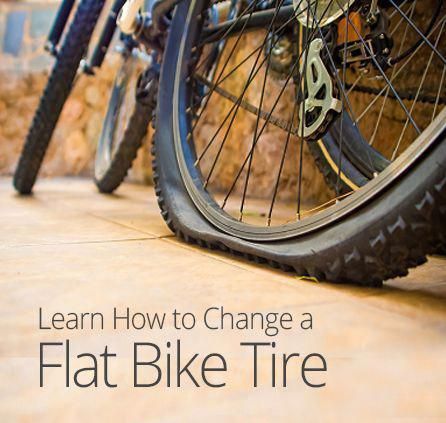 In America and Western Europe, a popular unit is PSI, as they actively use pounds and inches in measurements. Pascals are the least used unit of measurement, but the most modern. Some bicycle manufacturers write data on the wheels about the allowable pressures in all three systems.
In America and Western Europe, a popular unit is PSI, as they actively use pounds and inches in measurements. Pascals are the least used unit of measurement, but the most modern. Some bicycle manufacturers write data on the wheels about the allowable pressures in all three systems.
Manufacturers indicate on the sidewall of the tire how many atmospheres to pump the bicycle wheels. Specifies the range within which the owner of the "iron horse" determines the desired values, depending on the specific factors of riding his bike. Values in the range are labeled from min to max, in two or all three dimensions. Numbers up to 10 are atmospheres (or BAR), tens-hundreds are PSI, and six-digit values \u200b\u200band with the prefix “k” / kilo are Pascals.
When inflating a tire, you must strictly follow the manufacturer's recommendations and try not to go beyond both the minimum and maximum pressure levels indicated on the tire. Moreover, it is better to leave a small margin of 0. 2-0.5 BAR, both in one direction and in the other, so that the tire does not burst.
2-0.5 BAR, both in one direction and in the other, so that the tire does not burst.
The pressure in the wheel is kept by the tire, not the tube, so there is no single standard for its value. There are several significant factors that determine how much you need to pump the wheels on a bicycle.
Tire type is determined by the surface of the track that the cyclist will predominantly ride on. Accordingly, the level of inflation of the bicycle wheel will be different. There is a direct dependence on the roughness of the tread and the width of the wheel - the more lugs and the wider the wheel, the lower the pressure should be. Empirically, cyclists quickly determine how many atmospheres should be in the tires of their bicycle
Many cyclists do not think about the fact that air temperature affects the pressure level in bicycle tires. From the course of school physics, we recall that when heated, bodies expand. This means that in hot sunny weather, the pressure inside the air chamber will increase without additional pumping. Conversely, on cold winter days, a decrease in tire pressure is quickly felt due to low temperatures. So, when going for a bike ride in the cold season, the pressure indicators need to be adjusted a little higher than usual, and in the summer heat, let the air out a little. It is worth noting that when going on a bike ride, you should always take into account the weather conditions.
This means that in hot sunny weather, the pressure inside the air chamber will increase without additional pumping. Conversely, on cold winter days, a decrease in tire pressure is quickly felt due to low temperatures. So, when going for a bike ride in the cold season, the pressure indicators need to be adjusted a little higher than usual, and in the summer heat, let the air out a little. It is worth noting that when going on a bike ride, you should always take into account the weather conditions.
It is important to consider the load on the bike created by the weight of the rider, especially the fact that most of it is on the rear wheel. Therefore, the degree of its pumping should be slightly higher than the front, the optimal difference is 10%.
To calculate the optimal tire pressure for a bicycle, given the weight of its rider, you can use the table:
Rider weight (kg) Pressure (atmosphere) Pressure (PSI)
The nature, riding style and type of bicycle also affect tire pressure. Buyers who prefer an active pastime often opt for mountain bikes with 26-inch wheels, which ride well both on city streets and in rough terrain.
Buyers who prefer an active pastime often opt for mountain bikes with 26-inch wheels, which ride well both on city streets and in rough terrain.
To understand to what pressure to inflate the wheels of a bicycle, it is necessary to take into account the features of both the bike itself and other, at first glance, weightless factors. For example, weaving threads on a tire, rim thickness, driving style. The likelihood of a tire coming off a wide rim is much less than a narrow rim, because a wider rim will hold the tire better than a thin one. Mountain biking already by its name suggests the presence of a difficult surface on the track, with possible obstacles and bumps. The driving style is more aggressive than on a smooth, calm trajectory, it obliges you to increase the tire pressure to a level slightly less than the upper limit.
The diameter of the wheel will also affect the selection of the optimal pressure value, since the larger it is, the higher the volume of air pumped will be.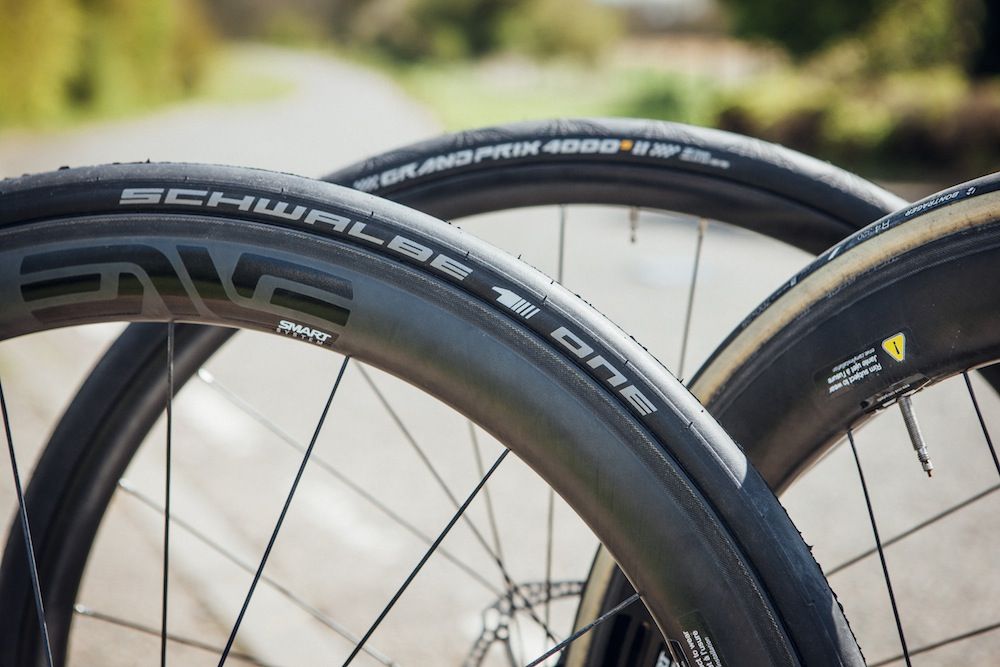 However, for mountain bikes it is not so important whether the wheel diameter is 26 or 29 inches, it is much more necessary to pay attention to the parameters of the rider's weight and the type of track.
However, for mountain bikes it is not so important whether the wheel diameter is 26 or 29 inches, it is much more necessary to pay attention to the parameters of the rider's weight and the type of track.
There are no hard and fast rules about how much you need to inflate the wheels on your bike. There is common sense, experience, practice. Manufacturers can recommend certain values, but only the owner himself will determine exactly which road he will ride, in what weather conditions he will drive, take into account his weight parameters or not. The decision, what pressure in the wheels will be ideal, is sure to be found.
Important! Some tires have wear indicators - one or two small dimples.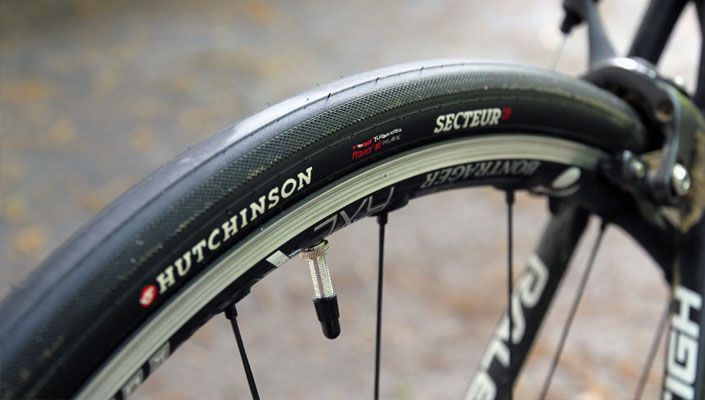 When they disappear, tires need replacement
When they disappear, tires need replacement
Bicycle tires and tubes
Final price
5,799 ₽
Schwalbe | Tire Schwalbe Durano 700 x 28C
Buy
-10%
Final price Maxxis | Tire Maxxis Ardent, 27.5 x 2.4, 61-584, 60 TPI, Mountain
Buy
Final price
4 999 ₽
Schwalbe | Tire Schwalbe Durano 700 x 23C
Buy
Final price
4 999 ₽
Schwalbe | Tire Schwalbe Durano 700C x 25
Buy
-20%
Final price Maxxis | Tire Maxxis CrossMark II, 27.5 x 2.25, 57-584, 60 TPI, Mountain
Buy
-20%
Final price Schwalbe | Schwalbe Marathon 26 x 2.0 Tire
Buy
Final price
3 599 ₽
Schwalbe | Tire Schwalbe Land Cruiser Plus 26 x 2.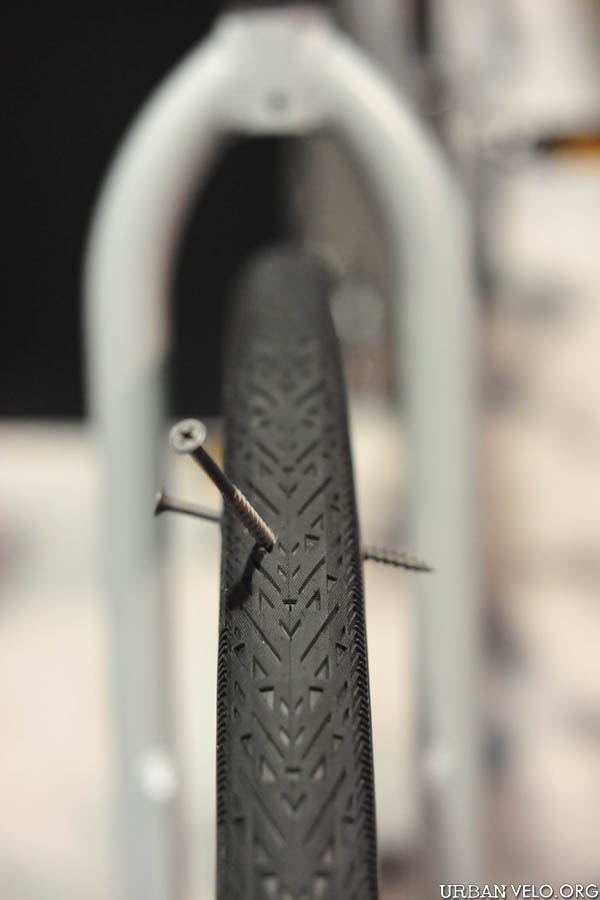 0
0
Buy
-15%
Final price Maxxis | Tire Maxxis Pace, 27.5 x 2.1, 53-584, 60 TPI, Mountain
Buy
-10%
Final price Schwalbe | Tire Schwalbe Land Cruiser Plus 27.5 x 2.0
Buy
-10%
Final price
3 329 ₽
3 699 ₽
Maxxis | Tire Maxxis Ardent, 27.5 x 2.4, 61-584, 60 TPI, Mountain
Buy
-20%
Final price Maxxis | Tire Maxxis Ikon, 27.5 x 2.2, 56-584, 60 TPI, Mountain
Buy
-15%
Final price Maxxis | Tire Maxxis Overdrive Excel, 26 x 2.0, 50-559, 60 TPI
Buy
Before choosing a tire, the first step is to determine its size (by wheel diameter and width).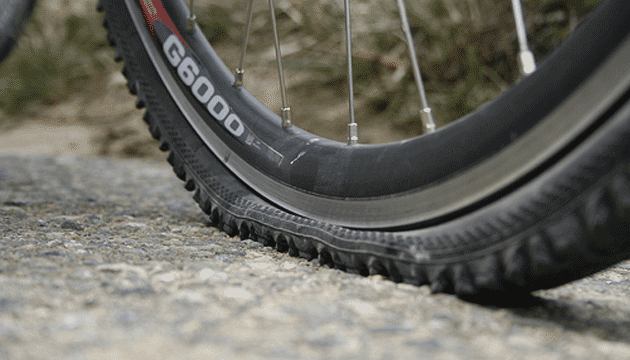 It depends on what rims your bike has.
It depends on what rims your bike has.
But the types of markings are different:
The diameter according to the universal system for measuring tires (ISO 5775 or ETRTO ) indicates the inner diameter (in millimeters, mm) and the width of the tire (also in millimeters, mm).
Consists of two numbers, for example, 57–559
English and French manufacturers may indicate a different marking: outer diameter for tire width (in inches, ''). Sometimes tire height is added (decimal, inches, '').
Diameter and width: two numbers or a decimal, e.g. 28 x 1.4, 28 x 1 1/8. View diameter, height and width: 28 x 1 5/8 x 1 3/8
where A is the largest).
For example, 700 x 35C
Important! You can also find out the tire size:
A few tire recommendations:
 9-1.1'' (25-28 mm): it will be easier to ride on dirt or wet roads.
9-1.1'' (25-28 mm): it will be easier to ride on dirt or wet roads. Expert recommends
38,999 RUB
Stern | Mountain bike Stern Motion 2929", 2021
Buy
44 999 ₽
Stern | Mountain bike Stern Motion 4.0 27.5", 2021
Buy
17,999 ₽
Denton | Women's mountain bike Denton Aura 1. 0 26"
0 26"
Buy
27,999 ₽
Stern | Mountain bike Stern Energy 2.0 27.5", 2022
Buy
44 999 ₽
Stern | Mountain bike Stern Force 2.0 29", 2021
Buy
24,999 ₽
Stern | Bicycle for boys Stern Action 24 Alt 24", 2022
Buy
32 999 ₽
Stern | Mountain bike Stern Motion 1.0 27.5", 2021
Buy
27,999 ₽
Stern | Women's mountain bike Stern Angel 2.0 27.5", 2022
Buy
Final price
44,999 ₽
Trek | Teenage bike Trek Precaliber 20 Fw 20", 2022
Buy
24 999 ₽
Stern | Mountain bike Stern Energy 1.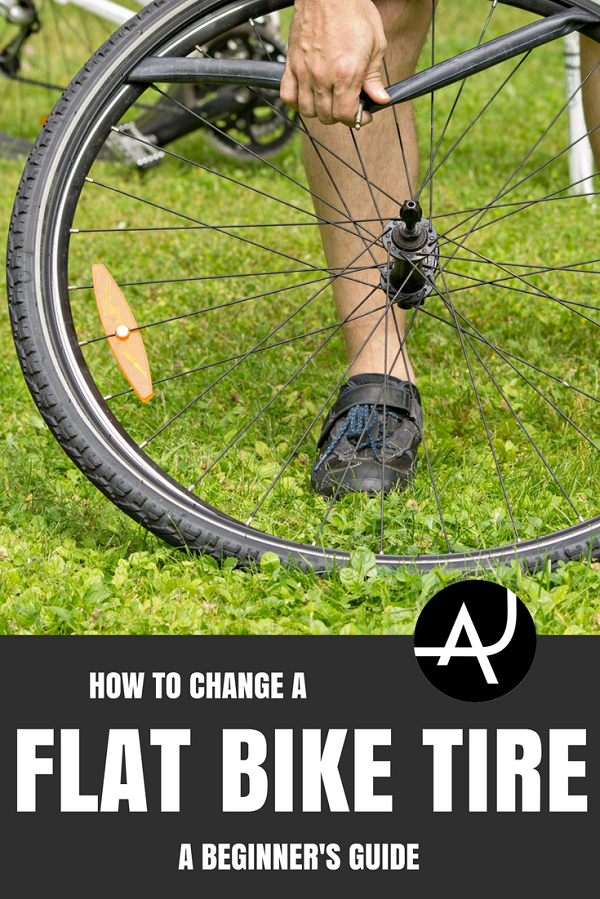 0 Sport 26", 2021
0 Sport 26", 2021
Buy
17,999 ₽
Denton | Mountain bike Denton Storm 2.0 26"
Buy
Final price
71 499 ₽
Trek | Mountain bike Trek Marlin 4 29", 2022
Buy Now
Slick
Designed for asphalt and racing tracks.
The tread is either missing or has shallow drainage groovesSlicks do not create wheel vibration, so the bike can reach high speeds on a flat, smooth surface. But when braking and on wet roads, care should be taken, and it is not recommended to go off-road, as this is fraught with loss of control and breakdown of the wheel.
Semi Slick
Provides reliable grip on sand, suitable for cross-country dirt roads, light off-road and asphalt. Fast and silent running.
Fast and silent running.
Usually this type of tire comes with a new bike.
Mud/gravel
Ideal for mountain bikes.
Aggressive tread provides reliable grip on gravel, sand and snowDue to the relatively large weight and deep tread, tires create additional resistance, so driving on asphalt is not a good idea.
Crossover/Urban
The rubber of this type of tire is very durable due to reinforced carbon fiber beads.In the middle of the tire there is a tread of high lugs, so these wheels are suitable for traveling on asphalt and dry dirt.
Bicycle tires and tubes
Final price
5 799 ₽
Schwalbe | Tire Schwalbe Durano 700 x 28C
Buy
-10%
Final price Maxxis | Tire Maxxis Ardent, 27.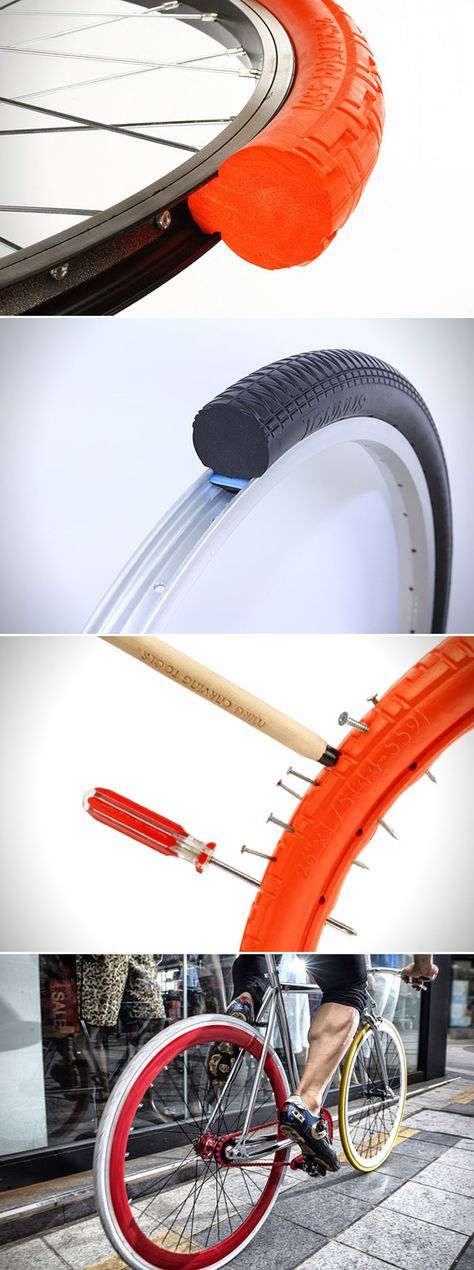 5 x 2.4, 61-584, 60 TPI, Mountain
5 x 2.4, 61-584, 60 TPI, Mountain
Buy
Final price
4 999 ₽
Schwalbe | Tire Schwalbe Durano 700 x 23C
Buy
Final price
4 999 ₽
Schwalbe | Tire Schwalbe Durano 700C x 25
Buy
-20%
Final price Maxxis | Tire Maxxis CrossMark II, 27.5 x 2.25, 57-584, 60 TPI, Mountain
Buy
-20%
Final price Schwalbe | Schwalbe Marathon 26 x 2.0 Tire
Buy
Final price
3 599 ₽
Schwalbe | Tire Schwalbe Land Cruiser Plus 26 x 2.0
Buy
-15%
Final price Maxxis | Tire Maxxis Pace, 27.5 x 2.1, 53-584, 60 TPI, Mountain
Buy
-10%
Final price Schwalbe | Tire Schwalbe Land Cruiser Plus 27.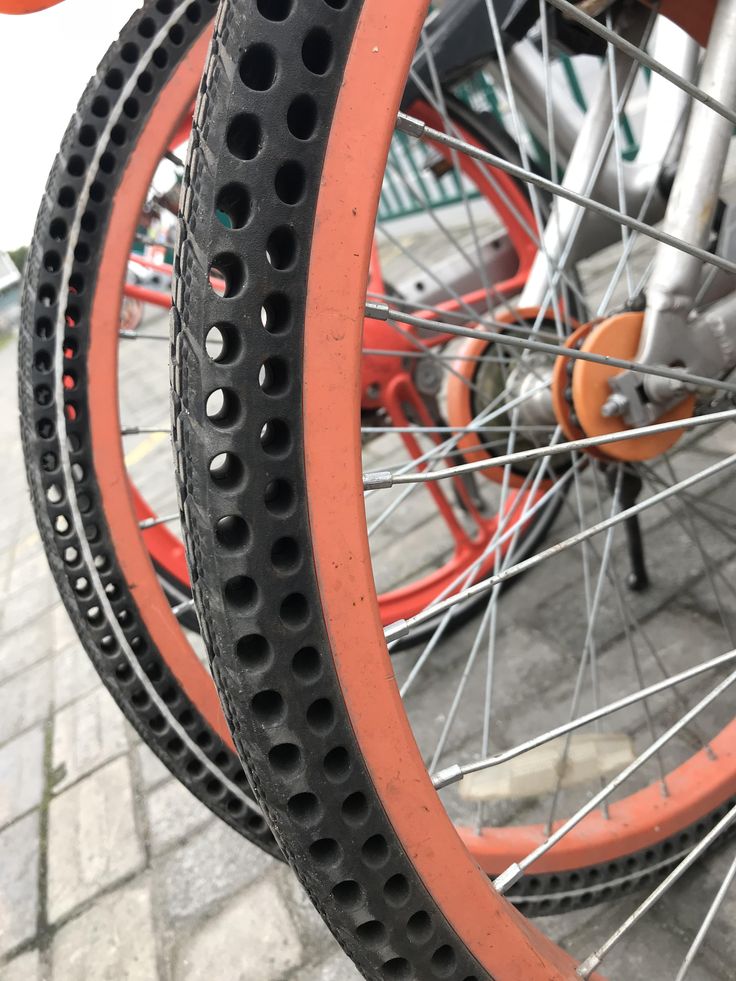 5 x 2.0
5 x 2.0
Buy
-10%
Final price
3 329 ₽
3 699 ₽
Maxxis | Tire Maxxis Ardent, 27.5 x 2.4, 61-584, 60 TPI, Mountain
Buy
-20%
Final price Maxxis | Tire Maxxis Ikon, 27.5 x 2.2, 56-584, 60 TPI, Mountain
Buy
-15%
Final price Maxxis | Tire Maxxis Overdrive Excel, 26 x 2.0, 50-559, 60 TPI
Buy
According to the way the tires are installed:
Clincher
Standard tires with beads that fix them on the wheel rim. Installing and changing these tires is quite simple. Their weak point is the camera, which is easy to pierce while riding.
Tubeless (folding)
The function of the camera is performed by a safety cable made of Kevlar threads.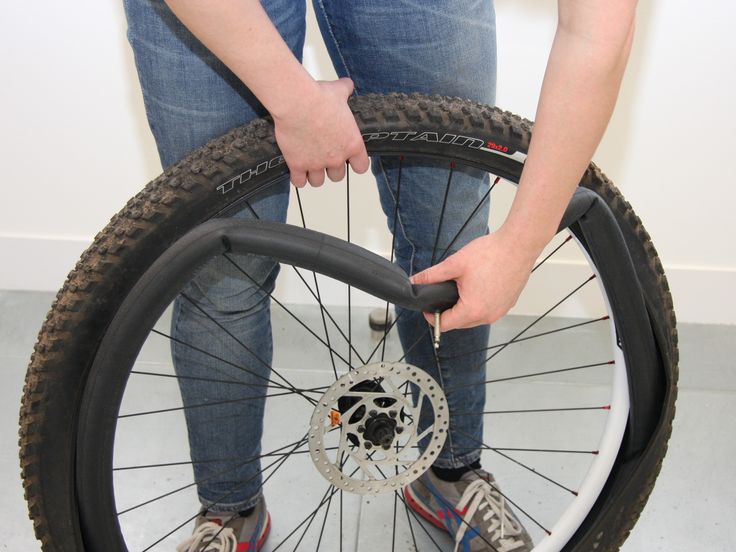 Tires are mounted on special rims with high sides and additionally sealed with an anaerobic adhesive-sealant. The absence of a chamber somewhat reduces the weight of the bike, and a punctured tire can be repaired right on the wheel.
Tires are mounted on special rims with high sides and additionally sealed with an anaerobic adhesive-sealant. The absence of a chamber somewhat reduces the weight of the bike, and a punctured tire can be repaired right on the wheel.
Tube
Impenetrable version with increased cord density (up to 320 TPI). Very light, so it is used on sports bikes. The cord does an excellent job with the tasks of the camera. Such a tube is attached to the wheel rim with glue.
The off-road summer tire has a tread depth of 6-8 mm and several layers of built-up rubber, making it resistant to punctures.
Winter tires are made of soft compound, some have studs. Winter tire tread depth - 9-11 mm, which provides confident grip on a snowy track and allows you to brake even on icy sections of the road.
EXPERT TIP
Winter tires are recommended to be used at temperatures up to +5 degrees, otherwise soft spikes will quickly wear off on asphalt
In our online store you will find tires for road, racing, mountain and other categories of bicycles. To replace them, contact the Sportmaster service centers.
To replace them, contact the Sportmaster service centers.
Other cycling material
In which direction should the bicycle pedals be turned?
Cycling
Olympic cycling
Cycling
Which lock to choose for a bike
Cycling
The lightest bike models
Cycling
What is a city bike and how is it different from the rest
Cycling
Child bike seat, trailer and other ways to ride a bike with your child
Cycling
Gear shifting on a bicycle: why it is needed and how to do it right
Cycling
What is the length of the bike? And the height? We tell everything about the dimensions and what they depend on
Cycling
What bike to buy for trips in the city and in nature? Here are 5 great options
Cycling
How to store a bike
Cycling
Can you ride a bike in autumn? Of course – and here are some helpful tips
Cycling
Types and disciplines of cycling
Cycling
How fast do they ride bikes?
Cycling
Our PRO-experts tested the Stern Motion 5. 0 bike on a bike tour in Altai. Here are the findings of the participant of the experiment
0 bike on a bike tour in Altai. Here are the findings of the participant of the experiment
Cycling
What is the pressure in the bicycle wheels
Cycling
What muscles work when cycling
Cycling
How far can you bike in a day
Cycling
"Cycling along the Chuisky tract": test drive of Stern Motion 5.0 bikes on the most beautiful road in Russia
Cycling Tourism
At what age can you ride a bike?
Cycling
Advantages and disadvantages of electric bicycles
Cycling
What speed can you reach on a road bike?
Cycling
How to choose a road bike? Here are 5 great models from the Sportmaster PRO range
Cycling
Introducing the winners of the project "You're in the game.